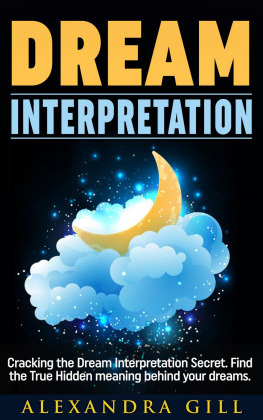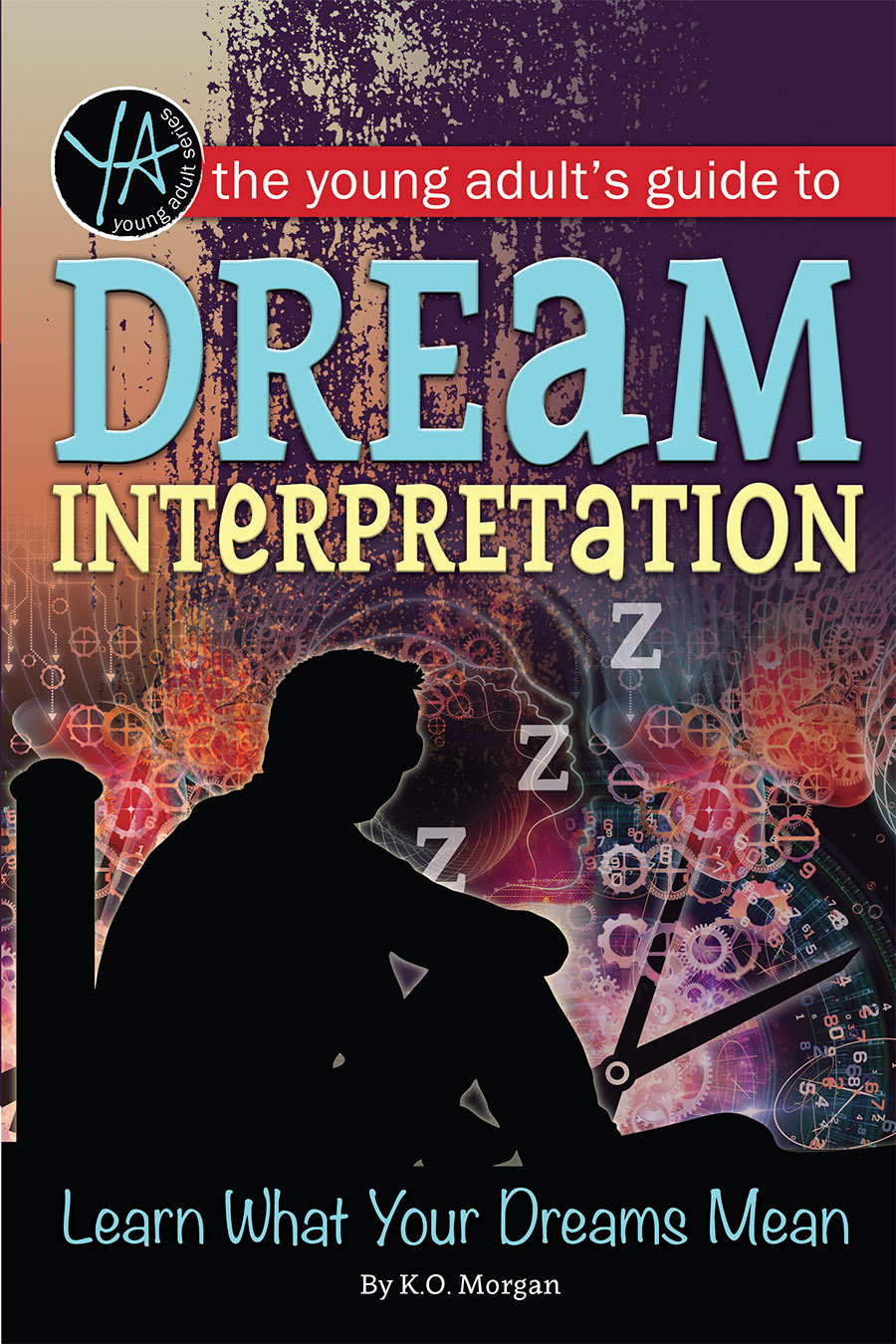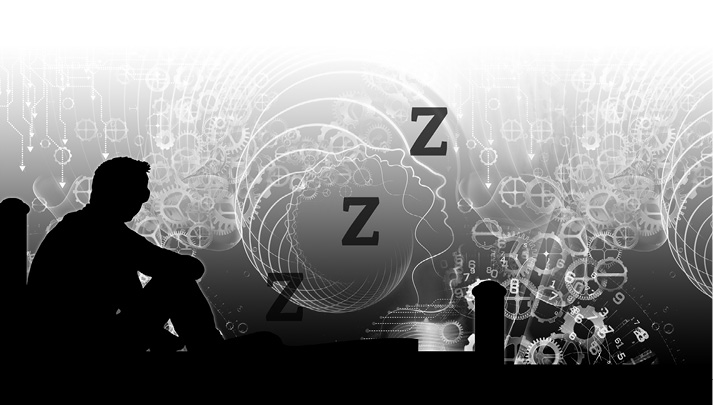The Young Adults Guide to Dream Interpretation:
Learn What Your Dreams Mean
Copyright 2016 by Atlantic Publishing Group, Inc.
1210 SW 23rd Place Ocala, Florida 34471
Phone: 800-814-1132Phone Fax: 352-622-1875
Website: www.atlantic-pub.com Email: sales@atlantic-pub.com
SAN Number: 268-1250
No part of this publication may be reproduced, stored in a retrieval system, or transmitted in any form or by any means, electronic, mechanical, photocopying, recording, scanning, or otherwise, except as permitted under Section 107 or 108 of the 1976 United States Copyright Act, without the prior written permission of the Publisher. Requests to the Publisher for permission should be sent to Atlantic Publishing Group, Inc., 1210 SW 23rd Place, Ocala, Florida 34471
Library of Congress Cataloging-in-Publication Data
Names: Atlantic Publishing Group.
Title: The young adults guide to dream interpretation : learn what your
dreams mean / Atlantic Publishing Group, Inc.
Other titles: Guide to dream interpretation
Description: Ocala, Florida : Atlantic Publishing Group, Inc., 2015. |
Audience: Grade 9 to 12. | Includes bibliographical references and index.
Identifiers: LCCN 2015037714| ISBN 9781601389824 (alk. paper) | ISBN
1601389825 (alk. paper)
Subjects: LCSH: Dream interpretation--Juvenile literature.
Classification: LCC BF1091 .Y68 2015 | DDC 154.6/3--dc23 LC record available at http://lccn.loc.gov/2015037714
LIMIT OF LIABILITY/DISCLAIMER OF WARRANTY: The publisher and the author make no representations or warranties with respect to the accuracy or completeness of the contents of this work and specifically disclaim all warranties, including without limitation warranties of fitness for a particular purpose. No warranty may be created or extended by sales or promotional materials. The advice and strategies contained herein may not be suitable for every situation. This work is sold with the understanding that the publisher is not engaged in rendering legal, accounting, or other professional services. If professional assistance is required, the services of a competent professional should be sought. Neither the publisher nor the author shall be liable for damages arising herefrom. The fact that an organization or website is referred to in this work as a citation and/or a potential source of further information does not mean that the author or the publisher endorses the information the organization or website may provide or recommendations it may make. Further, readers should be aware that Internet websites listed in this work may have changed or disappeared between when this work was written and when it is read.
TRADEMARK DISCLAIMER: All trademarks, trade names, or logos mentioned or used are the property of their respective owners and are used only to directly describe the products being provided. Every effort has been made to properly capitalize, punctuate, identify, and attribute trademarks and trade names to their respective owners, including the use of and wherever possible and practical. Atlantic Publishing Group, Inc. is not a partner, affiliate, or licensee with the holders of said trademarks.
Printed in the United States


Introduction
F or thousands of years, humans have contemplated the purpose and the meanings of dreams. In ancient times, dreams were often viewed as premonitions of the future. Mystery surrounded the sleeping state, and those who were able to interpret dreams were often held in high regard.
Starting about 2000 BCE, the Ancient Egyptians began writing down their dreams. Around three thousand years ago, the Greeks, and later the Romans, took dream interpretation to a higher level. They consulted dream interpreters on matters such as important military and political decisions. A familiar story is that of Claudia, wife of the Roman prefect of Judea, Pontius Pilate, who warned her husband of a dream she had that Pilates reputation would pay the price through history if he condemned Jesus the Nazarene to death.

Native Americans placed great importance on dreams and the messages they bring us. The Ojibwa and other tribes would create dream catchers in order to have greater control over their dreams. A dream catcher was a round willow hoop on which was woven a spider-like web or net and then decorated with sacred and personal items, including feathers and beads. The purpose of a dream catcher was to let in the good dreams while snagging the bad ones before they could reach the dreamer. Today, Native Americans still make and sell dream catchers.
The Chinese believed that dreams were a place your soul visited every night. Should a sleeping person be awakened suddenly before the soul had a chance to return from the dream state, his or her soul might fail to return to the body. For this reason, even today, many people in China do not use alarm clocks.
During the middle ages, dreams were considered evil or as messages from the devil. By the 1800s, dreams were viewed as the result of anxiety, indigestion, or some outside stimuli, such as noise.
But it was around the birth of modern psychology, in the 1870s, when the purpose of dreams first took on a different, more modern meaning. Psychologists, including Sigmund Freud and Carl Jung, began to view dreams as reflections of our secret wants, fears, and sexual desires. Often, limited or rigid interpretations were placed on dreams; sometimes the patient was left scratching his or her head because a particular interpretation did not seem to ring true. For example, Freud believed that most dreams contained sexual symbolisms and reflected secret sexual desires or fears, while Jung believed all dreams were outside the control of our will. Through the years, psychologists have differed greatly in their theories about the meanings of dreams or the reasons why we dream, often confusing their patients and the general public about the purpose or importance of dreaming and whether or not the average person could be trusted enough to interpret his or her own dreams.
Ann Faraday, in the 1970s, decided to confront the accepted ideas and interpretations about dreams. In her book, The Dream Game , she announced that only the dreamer can interpret the dream. In other words, though psychologists and other dream experts may suggest what a dream means and though there does seem to be some common symbolisms that run through many peoples dreams, it is only the dreamer, armed with self-knowledge and the awareness of what certain symbolisms may or may not mean, who can and should truly interpret his or her own dreams.
To Sleep Perchance to Dream
People spend about a third of their lives asleep about 25 years in an average lifespan of 75 years. And each night, the average person has four to seven dreams. Yet many people do not remember their dreams, and some claim they do not dream at all. However, all humans dream, as do many animals. In fact, over a course of a life, most people will have more than 100,000 dreams. It is the lack of understanding how to recall ones dreams that causes some individuals to believe they do not dream.











